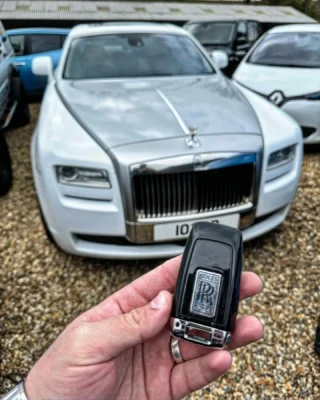Car Key Jammed: Causes, Solutions, and Preventive Measures
A car key jammed in the ignition is a common issue dealt with by vehicle owners. car key solutions escalates when individuals are pressed for time or need immediate access to their vehicle. This short article aims to supply thorough guidance on comprehending the causes behind a jammed key, potential solutions to resolve the problem, and preventive procedures to avoid reoccurrence in the future.
Comprehending the Causes of a Jammed Car Key
A car key might end up being jammed in the ignition for various reasons. A few of these causes include:
| Cause | Description |
|---|---|
| Damaged Key | A key that has become worn could struggle to fit properly within the ignition. |
| Ignition Cylinder Issues | Dirt, particles, or damage within the ignition cylinder can obstruct the key. |
| Guiding Wheel Lock | If the guiding wheel is locked, it can prevent the key from turning or being removed. |
| Electrical System Malfunction | Defective electrical connections or issues with the ignition switch can trigger problems. |
| Cold Weather | Incredibly low temperature levels can cause condensation to freeze within the ignition system. |
Determining the Problem
Before using any solutions, it is crucial to diagnose the problem clearly. The following list can assist in determining the underlying problem:
- Check the Steering Wheel: If the guiding wheel is locked, carefully turn it while attempting to get rid of the key.
- Inspect the Key: Examine the key for signs of wear and tear, or bending which may hinder proper functionality.
- Examine the Ignition Cylinder: Look for visible debris or internal breakdowns that might be triggering the jam.
- Temperature level Check: Consider the environment conditions. Is it unusually cold, which could impact ignition performance?
Solutions for a Jammed Car Key
When the origin has been developed, several solutions can be applied to deal with the jammed key concern.
Immediate Solutions
- Mild Wiggling: Attempt to carefully wiggle the key while trying to turn or pull it out. Avoid using excessive force to prevent damage.
- Lubrication: Applying a small amount of graphite or silicone lubricant can help loosen up a stuck key. Spray or insert it into the ignition cylinder thoroughly.
- Usage Pliers: If the key's head is accessible, utilizing pliers might supply the necessary grip to pull the key out without much force.
- Battery Disconnect: If the key is stubbornly stuck, detaching the vehicle battery for a few minutes may reset the electrical components.
Long-term Solutions
If the issue continues or repeats regularly, consider the following actions:
- Key Replacement: If the key is broken, it might be needed to replace it. Go to a locksmith or your car dealership for a brand-new key.
- Ignition Cylinder Replacement: In cases of extreme damage or frequent jams, replacing the ignition cylinder itself might be required.
- Expert Assessment: When DIY efforts fail, looking for support from an expert mechanic is recommended. They can detect and repair much deeper problems within the car's ignition or electrical system.
| Service | When to Use |
|---|---|
| Gentle Wiggling | When the key is a little stuck however appears functional. |
| Lubrication | If the ignition appears dirty or the key is tough to turn. |
| Usage Pliers | When the key head is accessible and there's an obvious grip. |
| Professional Assessment | When all DIY indicates fail or when much deeper mechanical/electrical concerns are thought. |
Preventive Measures
To prevent potential concerns in the future, vehicle owners can employ several preventative techniques:
- Regular Maintenance: Schedule regular assessments of your vehicle's ignition system to ensure everything is functioning efficiently.
- Key Care: Handle car keys with care, avoiding dropping them or exposing them to wetness and harsh chemicals.
- Temperature level Management: Protect the car from severe weather whenever possible. Consider using a garage for parking during severe cold or heat.
- Regular Lubrication: Regularly use lubes to the ignition cylinder and key, helping avoid dust accumulation and making sure smoother operation.
Regularly Asked Questions (FAQs)
Q1: Can I utilize oil to lube my car key or ignition?
A1: It is not recommended to use oil, as it can attract dirt and particles. Rather, utilize car key solutions or graphite-based lubes.
Q2: What should I do if my key breaks off in the ignition?
A2: If a key breaks off, do not try to remove the broken piece yourself. Seek help from an expert locksmith or mechanic.
Q3: Is it safe to use excessive force to try and remove a jammed key?
A3: No, utilizing extreme force can damage the ignition cylinder or the key, resulting in more significant issues and possibly costing more in repairs.
Q4: How can I tell if my ignition cylinder needs to be changed?
A4: If you often experience key jamming, difficulty in turning the key, or relentless electrical issues in starting the vehicle, it might be time for a replacement.
A jammed car key can be an inconvenient and frustrating circumstance for any vehicle owner. By comprehending the underlying causes, carrying out the right solutions, and embracing preventive steps, individuals can mitigate the possibility of facing this issue in the future. When all else stops working, seeking expert support makes sure that the problem is successfully fixed, permitting you to go back to stress-free driving.

